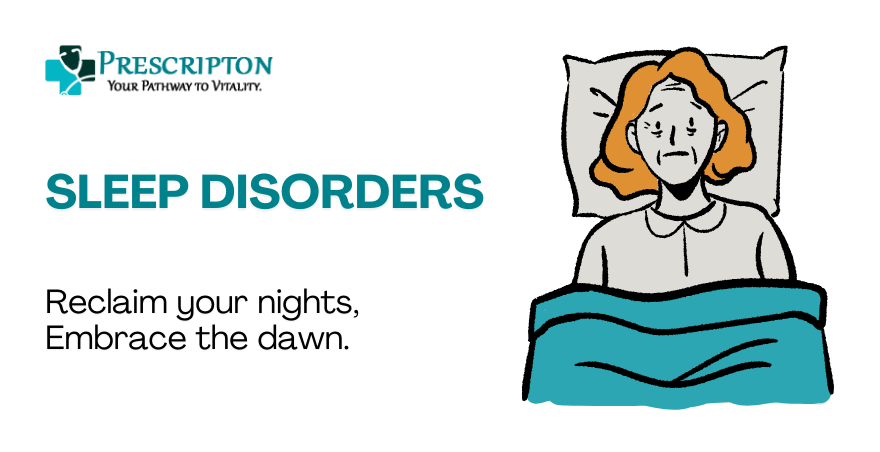
Sleep Disorders: Symptoms and Solutions
Sleep disorders affect millions of people worldwide, leading to significant disruptions in their daily lives. In the workplace, the impact of sleep disorders can be profound, affecting productivity, safety, and overall well-being. This blog explores how sleep disorders impact the workplace, the common types of sleep disorders, and strategies for addressing them to promote a healthier and safer work environment.
Understanding Sleep Disorders
Sleep disorders encompass a range of conditions that affect the quality, duration, or timing of sleep. These disorders can lead to excessive daytime sleepiness, difficulty falling or staying asleep, or abnormal sleep behaviors. Some common sleep disorders include:
- Insomnia: Difficulty falling asleep or staying asleep, leading to poor sleep quality.
- Sleep Apnea: Repeated interruptions in breathing during sleep, causing fragmented sleep.
- Restless Legs Syndrome (RLS): An overwhelming urge to move the legs, often disrupting sleep.
- Narcolepsy: A condition characterized by sudden and uncontrollable episodes of sleep during the day.
- Circadian Rhythm Disorders: Disorders affecting the body’s internal clock, disrupting sleep-wake cycles.
The Impact of Sleep Disorders on Productivity
Sleep disorders can have a significant impact on workplace productivity. Employees who struggle with sleep may experience:
- Reduced Focus and Concentration: Sleep deprivation affects cognitive functions, making it harder to concentrate on tasks and retain information.
- Decreased Decision-Making Ability: Sleep disorders can impair judgment and decision-making, leading to increased errors.
- Lowered Productivity: Fatigue and lack of energy result in decreased efficiency and slower work output.
- Increased Absenteeism: Employees with sleep disorders are more likely to take sick days or arrive late to work.
- Impaired Creativity and Problem-Solving: Sleep is essential for creativity and innovative thinking, both of which are compromised by sleep disorders.
The Impact of Sleep Disorders on Workplace Safety
Sleep disorders can also compromise workplace safety, particularly in high-risk environments. The safety risks include:
- Increased Accident Risk: Sleep-deprived employees are more prone to accidents, whether it’s operating machinery, driving, or performing other safety-sensitive tasks.
- Slower Reaction Times: Sleep deprivation slows reaction times, reducing the ability to respond quickly to hazards.
- Reduced Alertness: Employees who are fatigued are less likely to notice safety risks, leading to potential accidents.
- Impaired Communication: Sleep disorders can affect communication skills, leading to misunderstandings and errors.
Addressing Sleep Disorders in the Workplace
Employers and employees can take steps to address sleep disorders and minimize their impact on productivity and safety. Here are some effective strategies:
1. Education and Awareness
Educating employees about the importance of sleep and the risks associated with sleep disorders is crucial. Workshops, seminars, and informational resources can raise awareness and encourage healthy sleep habits.
2. Flexible Work Schedules
Flexible work schedules or remote work options can help employees manage sleep disorders by allowing them to adjust their work hours to align with their sleep patterns. This flexibility can improve productivity and reduce absenteeism.
3. Encouraging Work-Life Balance
Promoting a healthy work-life balance can reduce stress and support better sleep. Employers can encourage employees to take breaks, avoid overtime, and maintain a reasonable work schedule.
4. Ergonomic Workspaces
Ergonomic workspaces that promote comfort and reduce physical strain can contribute to better sleep. This can include adjustable chairs, proper lighting, and reduced noise levels.
5. Wellness Programs
Wellness programs that focus on overall health and well-being can support better sleep. These programs may include fitness classes, mindfulness sessions, and stress management workshops.
6. Support for Sleep Disorders
Employers can offer resources and support for employees with sleep disorders. This can include providing access to healthcare professionals, offering employee assistance programs (EAPs), and accommodating specific needs related to sleep disorders.
7. Promoting Healthy Sleep Habits
Encouraging healthy sleep habits among employees is essential. Tips for promoting good sleep include:
- Maintaining a consistent sleep schedule
- Creating a relaxing bedtime routine
- Limiting caffeine and alcohol intake
- Reducing screen time before bed
- Ensuring a comfortable sleep environment
Conclusion
Sleep disorders can have a significant impact on workplace productivity and safety, affecting both individuals and the organization as a whole. By raising awareness, offering support, and implementing workplace policies that promote better sleep, employers can create a healthier and safer work environment. Addressing sleep disorders not only benefits employees’ well-being but also contributes to improved productivity, reduced absenteeism, and a safer workplace. If you or your employees struggle with sleep disorders, consider seeking professional guidance and exploring strategies to promote healthy sleep habits.
